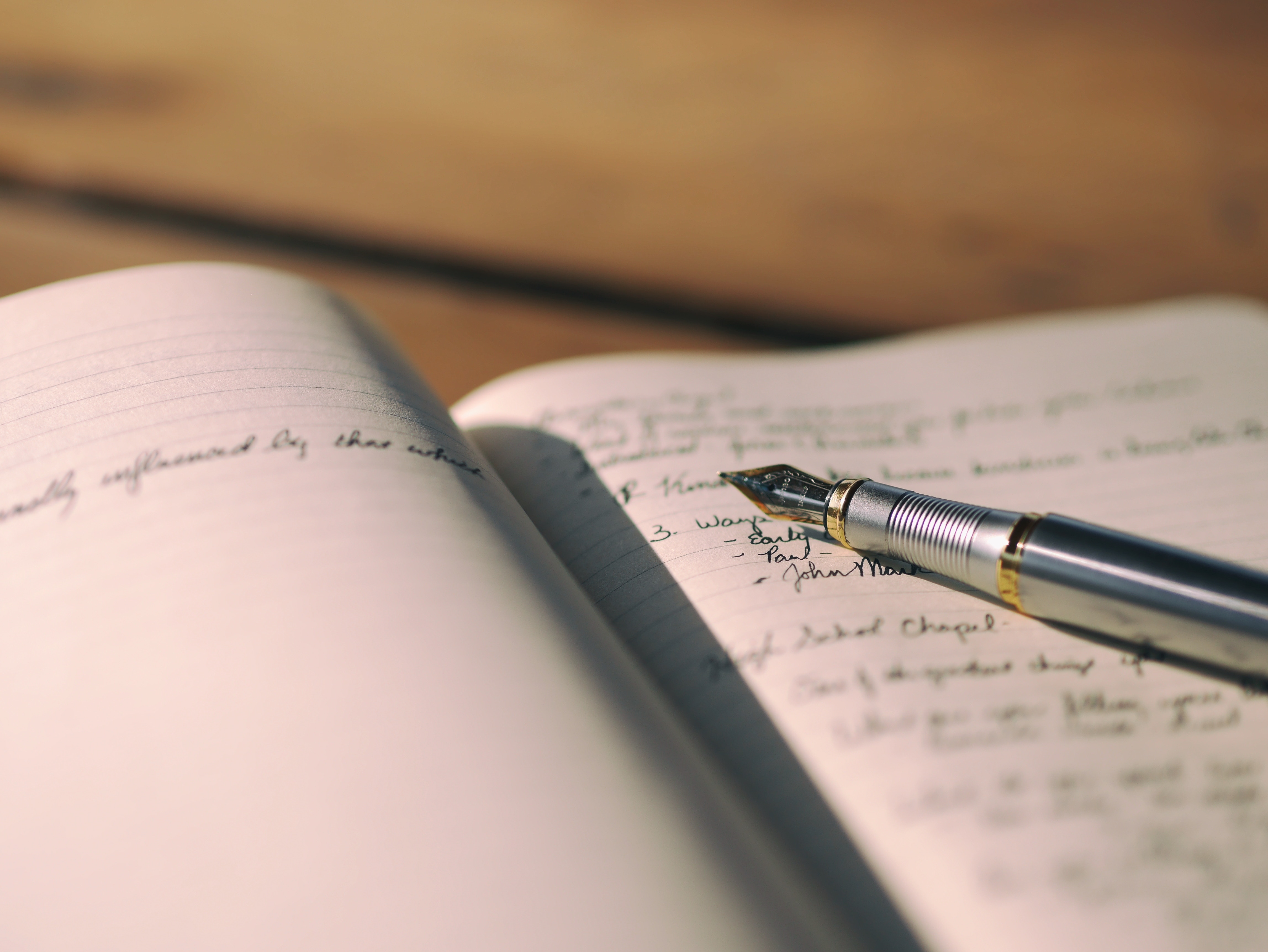
When it comes to working on individual competencies, grammar is hardly the favorite of most learners.
Many of us have been traumatized by the standard teaching approach in foreign language classes, where we were made to believe that communication can’t happen without flawless grammar—and that the best way to learn it is to slog through textbooks and memorize complex rules.
At the same time, it is not that hard to find blog posts claiming that we should all stop worrying about “proper grammar”, as it is in no way a necessary component of fluency (which is exactly what most disillusioned learners would like to hear).
Fair enough, you don’t really need to study grammar to achieve fluency. Just like a child learning their mother tongue, you can pick up correct grammar by exposing yourself to years’ worth of input. But if your goal is to learn the foreign language in the most time-efficient way possible, you should think twice before deciding to ignore it altogether.
The most reasonable approach to grammar is not about pretending that it doesn’t matter or obsessing about every single rule and exception. It’s about finding the middle ground between the two. One way to achieve this is to prioritize activities that also let you develop other competencies at the same time.
In this article, I’ll help you choose the right technique for you based on how long you’ve been learning the foreign language and how you feel about studying grammar.
Memorize meaningful language chunks
Poring over grammar books is rarely the optimal way to start your adventure with a foreign language. Truth be told, I don’t think beginners should aim to isolate grammar at all.
Grammar explanations only start to make sense when you can compare them against your first-hand experience of the foreign language. If you haven’t acquired it yet, you’ll be better off focusing on developing a basic understanding of the grammar by interacting with simple language bits.
A good way to give your grammar an early boost is to build your own arsenal of language chunks—prefabricated phrases and parts of sentences that can come in handy in a wide range of situations.
Memorizing the most valuable chunks (“chunking”) lets you improve your grammar and vocabulary at the same time. Most of all, it gives you something to work with when you’re making your first attempts at communication in the foreign language.
What kind of expressions should you pay attention to?
- Complete beginners should focus on basic structures that establish the topic of the sentence (e.g. “I’d like to …”; “You should try …”).
- Once you’ve mastered those, you are most likely to find use for sentence starters and clarifiers (“As far as I am concerned … ”; “The most important thing right now is to …”).
- Finally, intermediate learners can make their language more natural and expressive by memorizing formulaic expressions (nuanced phrases such as “to each his own” or “take your time”).
Things like these will make a huge difference in your ability to make your point clear. Since it’s unrealistic to expect that you’ll always be able to come up with them on the spot, memorization is the surest way to start using them consistently.
“But how is memorizing strings of words supposed to improve my grammar?” you might ask.
Learning grammar isn’t just about analyzing the mechanics behind all the moving parts of the language. It’s just as much, if not more, about burning certain patterns into your brain. And what better way to do so than by using them time after time?
You don’t always need to understand how a grammatical structure works in order to internalize it. If some area of the grammar leaves you perplexed, you can be sure that many native speakers wouldn’t be able to explain it either. But somehow they still manage to get it right (most of the time, anyway).
The key to understanding language chunks is that at first they’re acquired unanalyzed. You just learn the whole thing without really thinking about it.
So where should you get your chunks from, and how can you make sure you’ll remember them well?
The most obvious place to check for useful chunks is a good phrasebook. Just don’t copy over every single phrase you find—try to find ones that might come in handy in different contexts or pick out the expressions that are relevant to your own needs and interests.
Another source of potential chunks is language learning apps like Duolingo and Clozemaster. The main reason why they’re so good is the sheer amount of sentences you’ll be going through during the practice. Even if just 10% of them make good candidates for chunks, you can still expect to collect quite a lot of them.
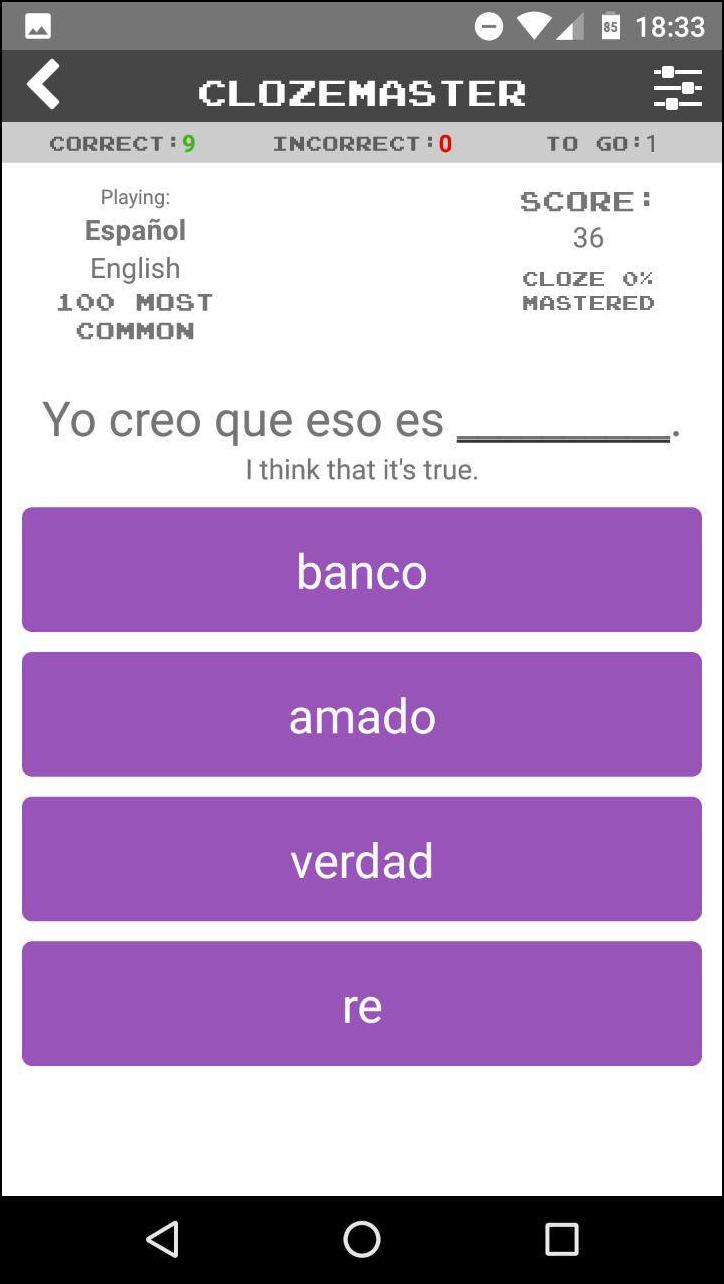
If you keep your eyes and ears open, you will find that any piece of media you read, listen to or watch in the foreign language can be an exceptionally useful source of chunks. Just prepare to capture them—a notepad or a note-taking app is your best bet. Once you’ve gathered a few new phrases, transfer them to some external system that you will use to memorize them. The free flashcard app Anki can work wonders here—thanks to the spaced repetition algorithm, committing new chunks to memory is as easy as spending a few minutes reviewing flashcards.
Though you’ll memorize them as fixed structures, chunks can be pretty flexible. Once you get comfortable with them, you’ll be able to change one or more words to express a different thought without much effort.
Starting from What should we do about this? you can easily get to:
- What should I do about my passport?
- What will you do about the broken door?
- I think I know what you should do about your loud neighbor.
Of course, memorization can only take you so far—to create a convincing illusion of fluency, you’d have to learn tens of thousands of chunks.
As you start learning grammar in more explicit ways, some of the chunks you’ve been using automatically will suddenly start making sense to you at a deeper level. Thus, the chunking approach should be seen as a stepping stone that helps you develop your communicative competence without bending over backwards to understand every grammatical nuance.
Get a feel for the grammar through exposure
According to Stephen Krashen’s theory of second language acquisition, the key to improving one’s command of the grammar is exposure to comprehensible input.
Comprehensible input can be described as all kinds of utterances that can be understood by the learner without much difficulty, even if they wouldn’t be able to produce them themselves. I’m sure that in your own language learning journey, you’ve noticed how large the gap between your comprehension and production skills can get. Krashen’s theory tells us that with enough exposure and practice, we should be able to close that gap once and for all.
The complexity of the grammatical system to be mastered makes it highly unlikely that it can be taught and learned … Even very complex rules, however, can be acquired (or “absorbed”) through comprehensible input, especially through reading.
The best way to expose yourself to comprehensible input in the comfort of your home is simply to read, listen to and watch foreign language media.
If improving your grammar through media consumption sounds too good to be true, you have to remember that certain conditions must be met before the magic can happen.
First, you have to find content that is just the right difficulty for your current comprehension skills. In one of my articles, I’ve gathered some suggestions for types of content that can be useful across various levels of proficiency—follow the links to learn more about the recommended written content and listening materials.
Second, you must make sure that your consumption of foreign media isn’t entirely passive. Being genuinely engaged with the language makes you much more likely to gain valuable insights into its grammar. You have to force yourself to think about the underlying structures of the sentences you’re exposing yourself to.
You can achieve this in several ways. Rewrite paragraphs from the text in a different tense. Repeat entire sentences after the speakers/actors, and then try switching a few words around. Challenge yourself to find sentences using a specific grammatical feature (e.g. future tense, the subjunctive), write them down and look for patterns. You get the idea—the point is to use your media consumption as an opportunity to play around with the scaffolding of the language, and not just passively observe it.
If you’d like to read about the best way to arrange active listening practice, check out 6 Active Listening Exercises for Learning Languages.
Lastly, don’t expect to see immediate improvements. It takes time for grammatical patterns to sink in and become second nature. You can speed it up a bit if you follow my advice and optimize your consumption for engagement, but it will still be much slower than with explicit grammar practice.

If learning grammar by exposure takes so long to bring results, why should you even bother?
The reason why this mode of practice so valuable is that it allows you to make progress in multiple competencies (reading skills, listening skills, vocabulary, grammar) at the same time. It may not the best way to quickly develop your grammar skills, but it works wonders as an all-around long-term language learning strategy.
Ultimately, you’ll reach a stage where some grammatical structures will just sound “right” to you. This is your end goal: your well-calibrated intuitions will let you make the right decisions without getting bogged down in technical details.
Test your grammar skills and get clear feedback
Once you’ve built up your intuitions by exposing yourself to well-formed language, you’ll want to hone them by subjecting them to as many little tests as possible. Believe it or not, one of the best ways to improve your grammar in a foreign language is to make a ton of grammatical mistakes.
You have to keep in mind, however, that not all of them are created equal—the most “productive” mistakes are the ones that are followed by clear, immediate feedback. If you set up your practice in a way that allows for such feedback, you’ll be sure to benefit from a phenomenon known as the testing effect.
From the point of view of learning effectiveness, it would be ideal if you never felt self-conscious about using grammar aspects that you haven’t mastered yet. After all, every opportunity to put your skills to the test is a step in the right direction. But since some ancient parts of our brains are terrified of looking stupid in front of others, the only sure way to feel comfortable with experimenting—and making lots of mistakes—is to do it in a safe environment.
Several generations of learners have built up their grammar skills by doing textbook exercises. Though this approach might seem a bit antiquated, it has the crucial features of an effective learning method: it forces you to play around with grammatical structures, provides you with a safe context, and give you access to clear feedback (in the answer key). It’s self-testing boiled down to its purest form.
There are, of course, many more ways to test your grammar skills on a regular basis. Here are a few quick suggestions to give you the general idea:
- Conjugate verbs out loud and look up conjugation tables to check if you’re right.
- Create your own grammar flashcards to review things that give you the most trouble.
- Write short stories emphasizing a specific grammatical feature—such as verbs in the past tense—and then have them corrected by a teacher or a native speaker.
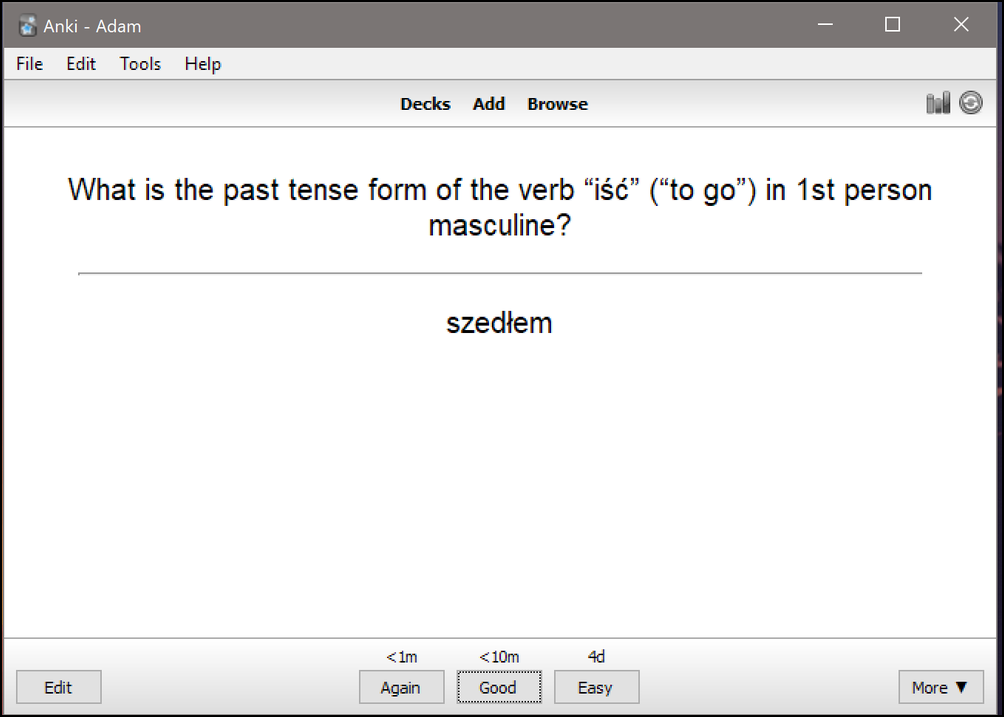
The key to strengthening the connections in your brain and internalizing proper grammar is to regularly recall what you’ve learned before, or better yet, put that knowledge into practice. It doesn’t really matter whether you’re breezing through or struggling to get anything right—as long as you’re getting clear feedback, you’re on the fast track to improvement.
Practice using grammar in authentic contexts with Clozemaster
When it comes to interactive grammar practice, you can hardly go wrong with Clozemaster.
The language learning app takes all the principles described above and throws in a healthy dose of gamification to make learning grammar much more fun.
Clozemaster’s core functionality lets you test and improve your language skills by filling in gaps in actual sentences sourced from an online database. The app takes the idea of a cloze test to the next level, giving you control over multiple aspects of your learning experience—for example, you can adjust the difficulty level by choosing to fill in the clozes by text input or multiple choice, as well as by displaying or hiding translations.
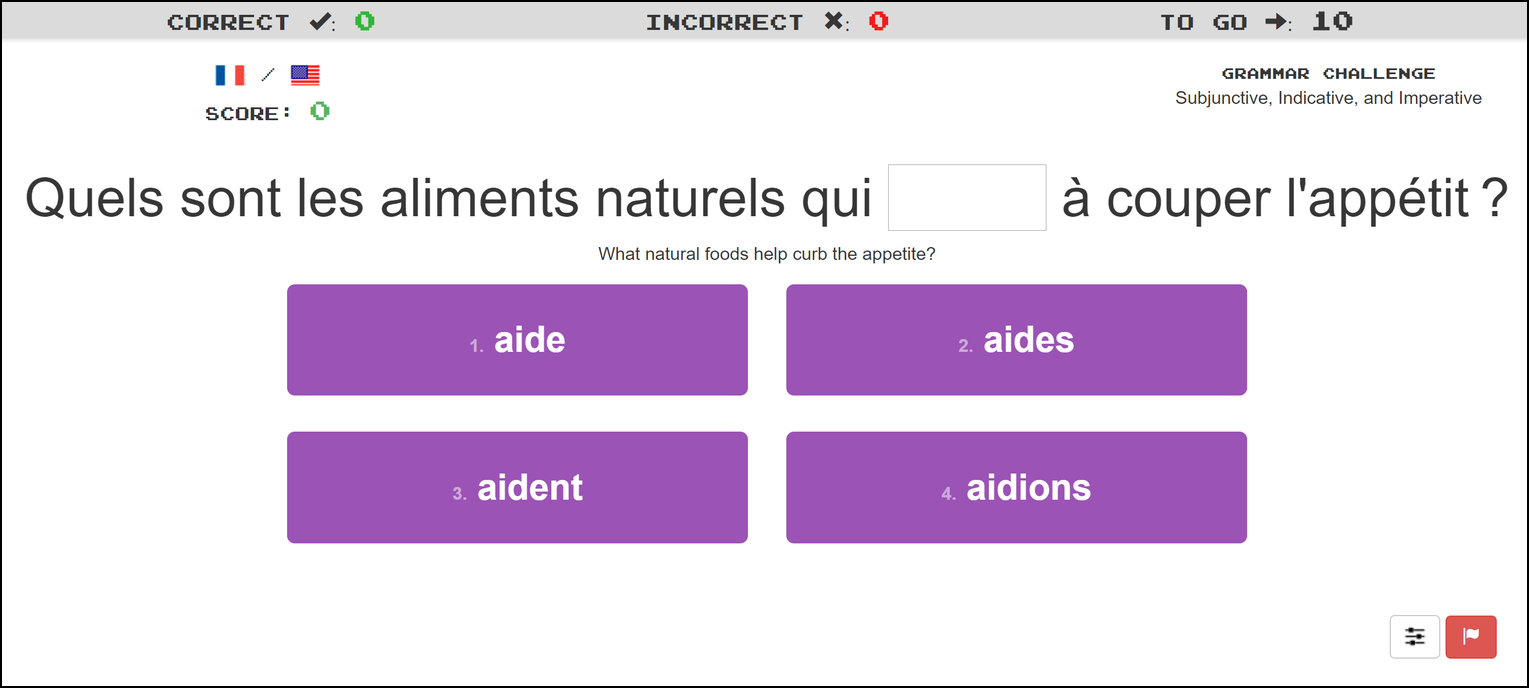
The idea behind Clozemaster is to help you improve your language skills in an organic way. Instead of splitting your learning time between several competencies, you can work on grammar, vocabulary and listening skills at the same time by exposing yourself to thousands of cloze tests with text-to-speech audio and realistic context.
For those interested in practicing grammar in isolation, Clozemaster offers a set of Grammar Challenges targeting specific grammatical concepts (available for a number of languages, with more coming soon). For example, users learning Spanish can choose to practice verb declension in the Preterite vs. Imperfect and Haber vs. Tener challenges, as well as work on their prepositions in the Prepositions and Por vs. Para challenges.
Thanks to the combination of mass exposure and testing, the thousands of sentences in Clozemaster’s database let you build a solid intuitive understanding of the grammatical system. The built-in spaced repetition algorithm optimizes reviews for maximum recall, helping you remember what you’ve already learned.
Start practicing grammar in context in one of the dozens of languages available on Clozemaster!
Use The Great Translation Game to practice writing in correct grammar
Another way to learn grammar in context is to work with texts written in perfect grammar. With The Great Translation Game, you can select or upload a native-level text and use it to practice writing in your target language.
You start with reviewing the automatically provided machine translation and editing it to correct any mistakes. Then, the original sentence disappears and your task is to recreate it from the translation. The game will let you know as soon as you commit a mistake – this kind of immediate feedback is crucial to improving your writing and grammar skills.
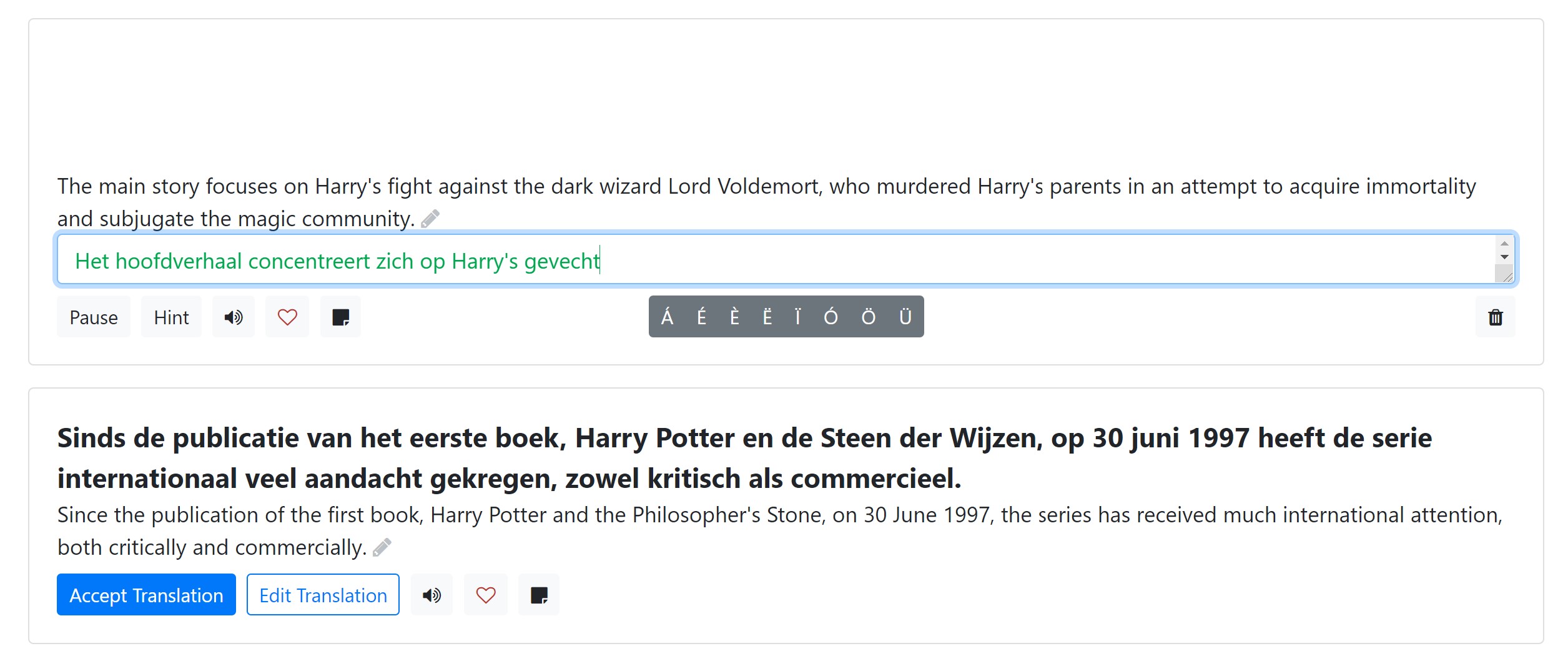
Practicing with The Great Translation Game lets you expose yourself to perfectly correct grammar and try your hand at imitating it. The ability to learn from content you’re genuinely interested in makes it a fun and unique way to improve your grammar skills and learn to write fluently in the language you’re learning.
Study grammatical rules to smooth out the rough edges
It might seem strange that something as “fundamental” as studying grammatical rules comes at the very end of the article, but there’s a good reason for that. Learning grammar from textbooks makes the most sense when you’re at least at the intermediate level—if you do it too early, you’ll most likely end up feeling lost and overwhelmed.
Putting off explicit grammar study means that when you finally get round to reading that textbook, many of the discussed structures will look familiar to you. All the exposure to grammar you have got up to that point will help you put the new knowledge in context, and even the most technical explanations will intuitively make sense to you.
Moreover, you’ll be sure that you haven’t wasted any time on deconstructing things that you could have figured out yourself. This alone makes it one of the most time-effective approaches to learning grammar available to any learner.
What I’m suggesting is essentially to treat grammar textbooks and explainers the way lazy people treat user manuals. Don’t read them before you’ve had the chance to play around with the language—only use them when you need an explanation for a specific issue, or when you want to make sure you haven’t overlooked any important features.
Another important thing to remember is that not all aspects of a language’s grammar are created equal. Some of them look important (and scary) when broken down in a textbook, but are of marginal significance when it comes to real-world usage. Unless you’re studying for a high-stakes proficiency exam, you really don’t have to master all of them. Instead, you should focus on the low-hanging fruit first—the most used structures, simple rules of a thumb, or things that have parallels in your own language.
When choosing a grammar textbook, try to look for something with many down-to-earth examples and exercises. This will help you engage with the content and build stronger associations. Once again, you don’t want your study sessions to be just about passive reading. Taking notes, drawing your own diagrams or making doodles are just a few little techniques you can use to help the knowledge sink in.
A useful learning method used by many successful learners is to create a dedicated grammar journal where you will dissect and deconstruct all the problematic grammar topics you encounter on your journey to fluency. Cut out the fluff and put information into a visual form when possible—all this will make the content easier to process and review.
Finally, remember that spaced repetition apps like Anki, usually associated with vocabulary flashcards, can be really effective tools for learning grammar. On top of the obvious benefits of being able to quickly review important grammatical information, putting grammar rules into flashcards will force you to rethink and compress certain topics, thus further improving your understanding.
Conclusion
The truth about grammar is that it is no less (or more) important than any other of the major language competencies. You can’t expect to be able to communicate well without a decent command of grammar, just as you can’t make proper use of the grammar with a limited vocabulary or poor listening skills.
This is why, if you care about efficiency, you should aim to work on more than one skill at the same time whenever possible. And since you’ll certainly struggle with wrapping your head around some grammatical topics—no matter what language you’re learning—you might have to do some extra work to bring your grammar in line with other skills.
If you’re looking for a free, well-rounded learning method that will help you target grammar in your daily routine, be sure to check out Clozemaster.
Its enjoyable exercises—including the specially designed Grammar Challenges—will let you expose yourself to grammar in context, which is the best way to get an intuitive grasp of the underlying rules.


Thank you for the valuable insights and pragmatic recommendations on learning grammar with a second language. This post provided the guidance I needed to create an effective personalized method of self study.